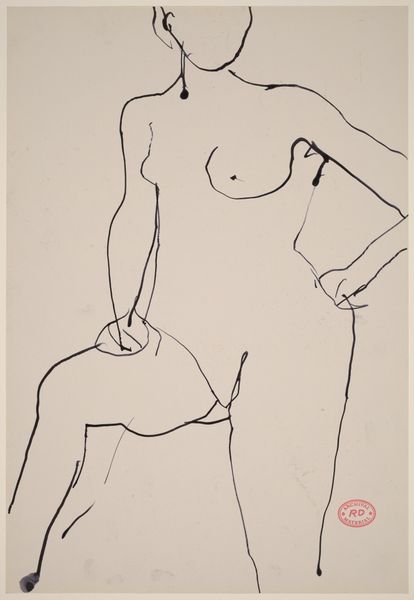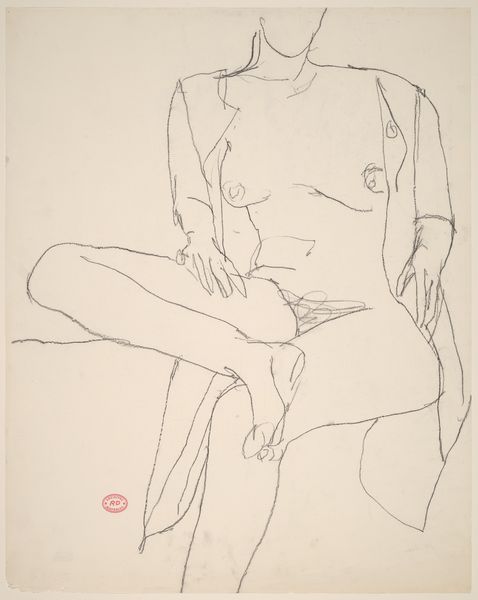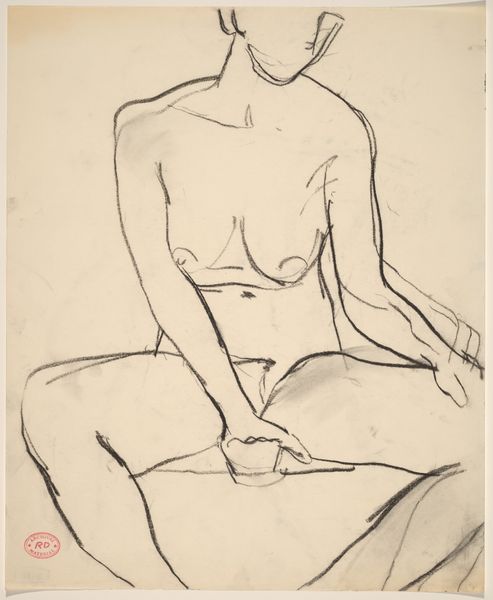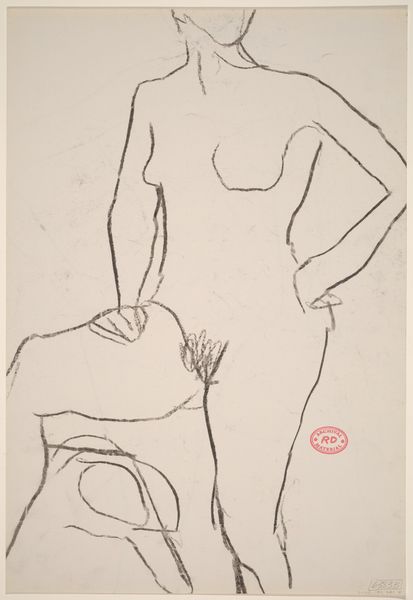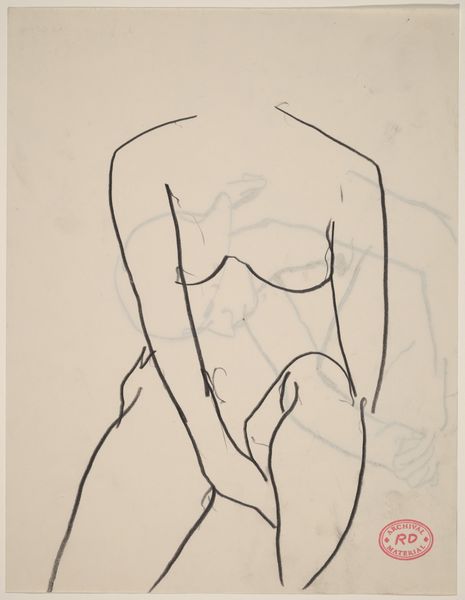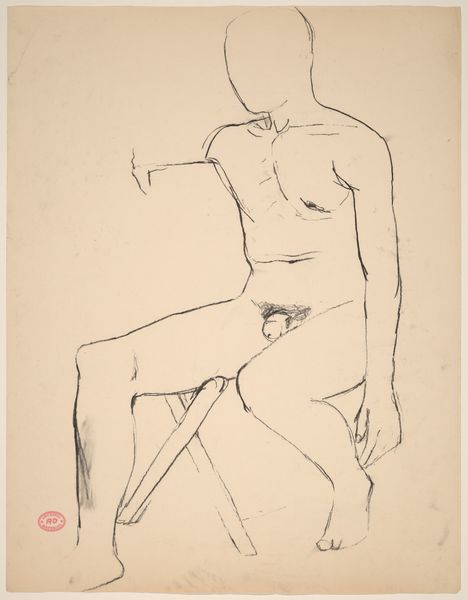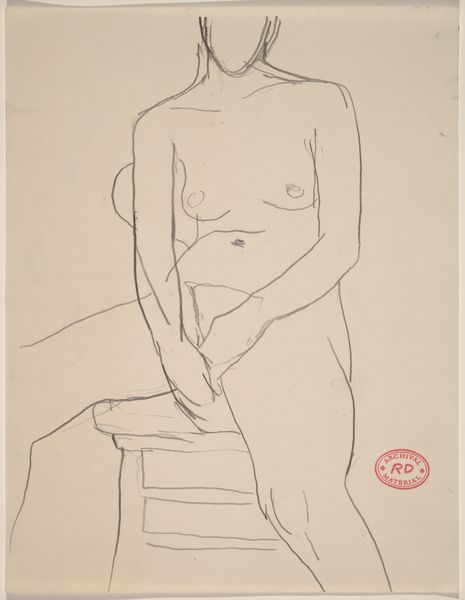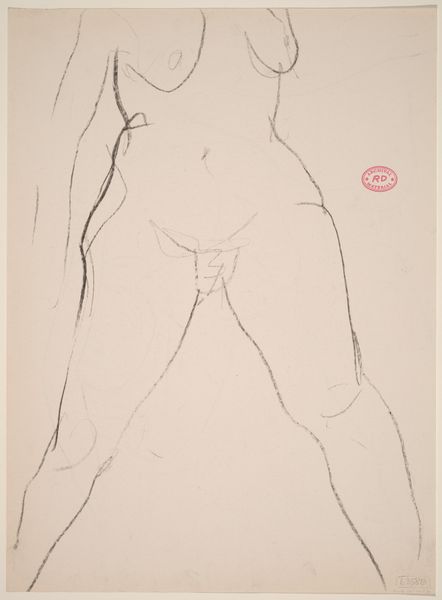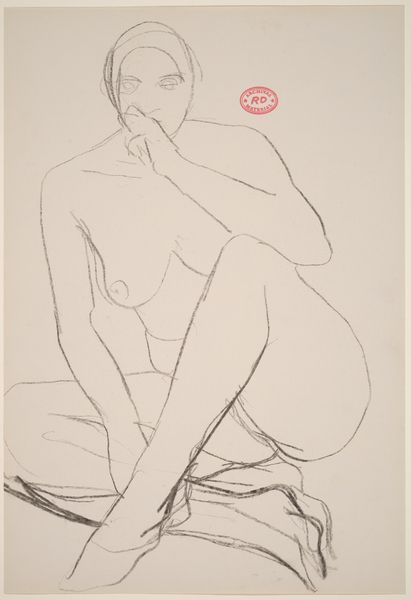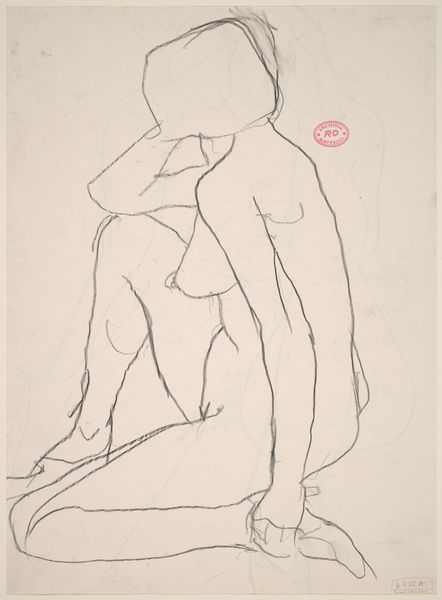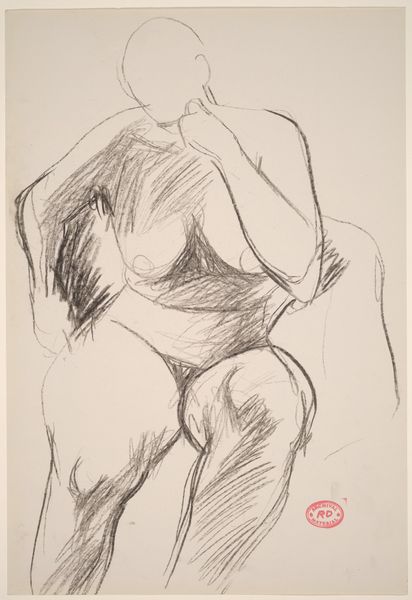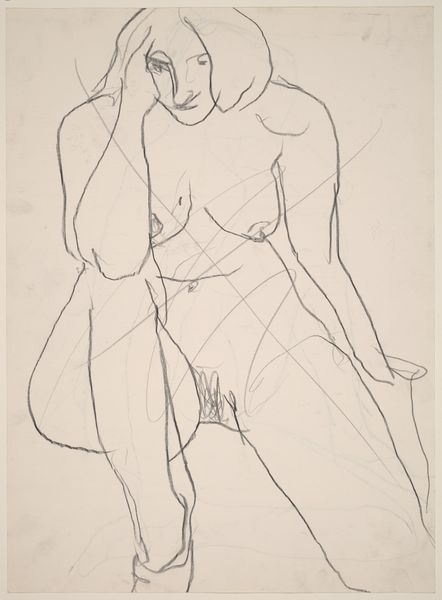![Untitled [nude seated and resting her right arm on a support] by Richard Diebenkorn](/_next/image?url=https%3A%2F%2Fd2w8kbdekdi1gv.cloudfront.net%2FeyJidWNrZXQiOiAiYXJ0ZXJhLWltYWdlcy1idWNrZXQiLCAia2V5IjogImFydHdvcmtzL2RmNzVmZTcyLThlY2YtNGMyZC05M2Y4LThiOWI3ODJmMTYwZS9kZjc1ZmU3Mi04ZWNmLTRjMmQtOTNmOC04YjliNzgyZjE2MGVfZnVsbC5qcGciLCAiZWRpdHMiOiB7InJlc2l6ZSI6IHsid2lkdGgiOiAxOTIwLCAiaGVpZ2h0IjogMTkyMCwgImZpdCI6ICJpbnNpZGUifX19&w=3840&q=75)
Untitled [nude seated and resting her right arm on a support] 1955 - 1967
0:00
0:00
drawing, pencil
#
drawing
#
figuration
#
bay-area-figurative-movement
#
pencil drawing
#
pencil
#
line
#
nude
Dimensions: overall: 40.6 x 27.9 cm (16 x 11 in.)
Copyright: National Gallery of Art: CC0 1.0
Editor: Here we have Richard Diebenkorn's "Untitled," created between 1955 and 1967, a pencil drawing on paper. The pose strikes me as contemplative, even vulnerable, but the loose linework is surprisingly energetic. What elements of the composition stand out to you? Curator: Indeed, the drawing presents a dynamic interplay of line and form. Note the economy of line used to define the figure. Diebenkorn utilizes line not just as contour but also to suggest volume and weight, consider the areas of shadow and depth achieved through variations in line density. How does the spatial arrangement affect your interpretation? Editor: I notice how the figure seems both grounded and somewhat flattened by the simplicity of the lines. It doesn't feel like a fully realistic depiction, but more an exploration of shape and form. Curator: Precisely. The emphasis shifts from mimesis to a structural analysis of the figure. Observe how the composition hinges on the contrasting diagonals and curves that generate a controlled tension within the pictorial space. How do these choices contribute to its overall affect? Editor: It creates a feeling of immediacy and honesty. The figure is not idealized, but rendered with an emphasis on raw, expressive line. Curator: An astute observation. Consider that by stripping away superfluous details, Diebenkorn lays bare the fundamental relationships between line, form, and space, enabling us to understand its formal underpinnings. What did you observe? Editor: I understand more about the artistic process. Looking at just lines and shape helps reveal layers of the subject matter. Curator: Agreed. Through formalist inquiry, one finds that Diebenkorn elevates the simple act of drawing to an intense exploration of form and spatial relationships.
Comments
No comments
Be the first to comment and join the conversation on the ultimate creative platform.
